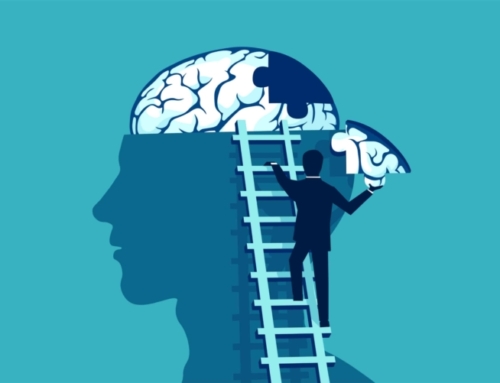Despite its wide acceptance, journaling is not as systematically widely used. I believe in journaling’s (or simply writing’s) benefits: if more people would engage in it, more people would benefit from it. I do not know for a fact why a praxis of writing is not more popular, but I would guess that many people did not have positive experiences of writing during their schooling. Often writing is not well taught nor frequently assigned. Thus, many adults do not have confidence in their writing abilities. Additionally, journaling is a specific type of writing, and its forms and rules are often not clear to people who might at least consider journaling. So, today, I begin to explore journaling.
One Benefit of Writing in General
My thesis is that writing is a form of thinking. Writing often is considered as simply a way of recording one’s thoughts, that is, a person thinks and then, while keeping those thoughts in mind or recalling them, writes them down. It is true that writing is a method of recording one’s thoughts and there is value in achieving a written record. But seen in this light, writing is secondary or superfluous to the act of thinking itself; first comes thinking, and second comes writing. This is a view with which I disagree. Writing, in addition to memorializing thought, is directly a form of thinking. Consider that there are several ways to engage in acts of thinking. One way is through silent thought; another way is by speaking out loud, whether to oneself or to others; and another way is through writing. Each is a form of thinking that we engage in at different times.
If it were possible to split oneself into three identical versions – the first version of oneself thinking silently, the second version speaking to someone, and the third version writing – and each version started with an identical train of thought, each version’s train of thought would soon diverge because their acts of thinking differ. So, just as I recommend that people who feel stuck in resolving a problem speak their thoughts out loud, I also recommend that they write them out. Because each thinking form’s activities differ, they lead down different thinking paths. These paths are complementary and changing the form of thinking can help a person arrive at understandings and conclusions they would not have arrived at through the use of other forms.
Writing is particularly useful as a way of reasoning through complex or stubborn problems. Because of its linearity, with one written thought following another, it provides a framework and a discipline to follow a train of thought. Additionally, since writing records those thoughts, it allows returning to what has been written to correct or expand the train of thought as well as to notate and expand paths of divergent thought.
Now, I list a series of reasons for journaling. In many cases, they overlap and complement each other.
Reasons for Journaling
- Problem-Solving and Goal-Setting: The entry starts by describing a problem in detail, and exploring its contributors and its consequences. Next, the focus turns to solutions, with various options listed along with each one’s pros and cons. The goal here is to identify solutions that are simple, effective, and direct. While ruminating about problems in one’s head, the problems often come to seem intractable and the solutions unattainable. Writing and reviewing a list of options can counteract this and can serve as a prompt for discussion with a friend or therapist. After the goals and general solutions are identified, the focus should turn to the setting of concrete observable goals and a step-wise plan anchored with dates and deadlines.
- Self-Understanding and Self-Acceptance: The focus is to explore and articulate one’s inchoate, ignored, or poorly understood thoughts and feelings to better understand one’s motivations, desires, fears, and unacknowledged aspects of self. Writing is a process of gradual recognition, acknowledgment, and acceptance of the feared or loathed aspects of self. On the path to fuller self-acceptance, a person can think their thoughts about self, turn them into a spoken declaration, and then, if so chosen, write them out.
- Coming to Terms: Through cognitive and emotional exploration, coming to terms means acknowledging and understanding the nature of a loss or trauma that occurred and what the reactions and consequences have been. Acknowledgment includes the loss of a life that might have been if not for the loss or traumatic event that occurred, the anger one feels at the hurt inflicted and what was taken away, the continued effects that one is haunted by, including the loss or trauma’s ongoing effects on one’s relationships and emotional and behavioral responses. The goal can be to incorporate the event and its consequences into a life narrative, to desensitize to traumatic aspects, and to feel the emotions related to what was lost or taken away. The goal is to grieve, to accept what happened and the life one now has as a result, and feel and accept self-compassion.
- Communication: Here, the focus is addressing, often in letter form, a person or group that one has unresolved and unstated thoughts and feelings towards as a way of coming to terms with formative (including traumatic) experiences and seeking closure to them. After one has written the letter, the decision is, if writing to a real person, whether to send it to that addressee. I counsel patients to write a letter as if it were meant to be sent, but then not to send it until a substantial amount of time has passed, if ever. First, a letter once written, continues to remain in the mind of the writer. So, this artifact is a prompt to continue to think thoughts and have feelings related to its message. Oftentimes the writer achieves a series of insights and chooses to rewrite the letter. Second, only after this extended process of living with one’s unsent letter, can the person decide whether to keep it, ritualistically burn it or destroy it in some other way, or send it. The ‘failure’ to send the letter should not be seen as a failure, however. The entire process of writing, living with, and struggling to decide what to do with it, allows a gradual coming to terms with painful experiences and reflections on its meanings and consequences.
- Understanding Reactions to Ongoing Experiences: The goal is to describe recent challenging and rewarding experiences, focusing on thoughts and feelings that occur in anticipation of an event or situation, at initial contact, through the course of the event or situation, and afterward. Description can include a comparison of anticipated thoughts and feelings to ones that occurred during the event and to ones that occurred afterward. This can help a person become aware of cognitive distortions and biases, such as anticipatory catastrophizing that is followed by potentially much less catastrophic or even pleasant reactions afterward. Additionally, this method helps a person better label emotions and attend to the nature of one’s thoughts. Through this, the writer can better perceive connections among various events, their contributions to those events, and their emotional and behavioral responses that may have (either or both) adaptive and maladaptive aspects.
- Desensitization: Journaling can be a form of cognitive and emotional exposure to traumatic events and, if done right, can lead to the decreased intensity of traumatic memories and an increased sense of mastery over one’s memories and emotional and behavioral responses. For a person with a trauma history, journaling can be frightening and should be attempted with the understanding that one should proceed gradually in exploring past events.
- Creative Exploration: Every writer and artist can benefit from journaling by having a venue to explore narrative threads and non-linguistic experiences. Writers of non-fiction benefit too by giving space to articulating ideas that arise and follow along or diverge from initial ones. Journaling also, of course, provides a record of one’s explorations and ideas for later review, reflection, and organization.
- Contemplative Review: When a person journals, those writings become a record that one can return to. Some people who journal appreciate the writing of their entries because the act of writing leads to improved understanding, but they may choose not to read their entries afterward. They may find reading their entries painful or embarrassing. Others, however, make reviewing their entries a part of their journaling praxis, perhaps doing so on a once-weekly basis. By reviewing entries at a later date, a person can view their thoughts and themselves more objectively – the entries seem as if written by someone else. Also, living with one’s thoughts, resurrecting, rethinking, reflecting upon, expanding, and incorporating them into one’s understanding, can be a deeply enriching and healing experience.
- Witness Consciousness: Here, a person writes quickly and attempts to capture as fully as possible the content of their stream of consciousness. Because the flow of conscious events is incessant and fast, writing helps open the space for recognition and reflection. It helps a person ‘lost in’ or ‘captured by’ their thoughts and emotions to perceive more clearly how their thoughts, emotions, perceptions, imaginings, and memories arise incessantly and quickly and just as quickly are replaced by subsequent phenomena. This exercise provides a beneficial distancing from this flow of experience and can lessen one’s automatic reactions and the felt need to respond to every thought and feeling.
- Narrative Construction: Here a person writes to better understand the connections among events in their lives, especially how earlier life events affected life’s unfolding and the nature of subsequent events. The goal is to understand one’s life as a story, as an understandable, meaningful, connected whole. This can lead to reflection on losses and traumas and their effects, thus leading to grieving and coming to terms. Equally, it can lead to reflection on successes and joys and to their celebration. It can turn a life that seemed to have unfolded randomly and chaotically, into one that makes sense, despite the bad decisions, bad luck, hurts, and betrayals that occurred. Narrative exploration is useful for people recovering from loss and trauma, facing a serious or life-threatening illness, or at the last stages of life.
Please let me know your thoughts and share your experience with journaling.
Take care,
Dr. Jack
Language Brief
“Journal writing is a voyage to the interior.” ― Christina Baldwin
“I never wrote things down to remember; I always wrote things down so I could forget.” ― Matthew McConaughey
“You must remember that your story matters. What you write has the power to save a life, sometimes that life is your own.” ― Stalina Goodwin
“Keeping a journal: The short entries are often as dry as instant tea. Writing them down is like pouring hot water over them to release their aroma.” ― Ernst Junger
“The habit of writing for my eye is good practice. It loosens the ligaments.” ― Virginia Woolf







Leave A Comment